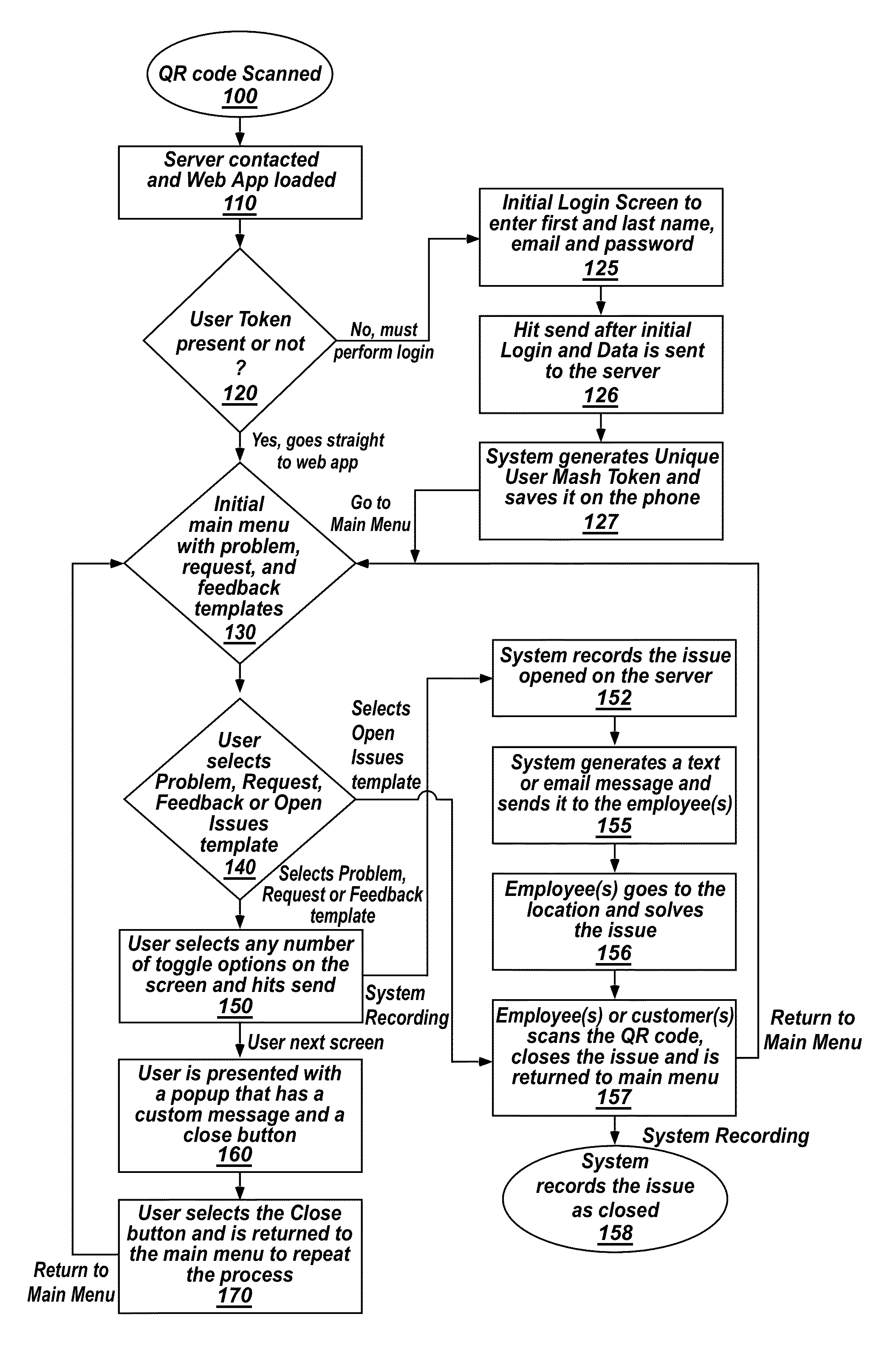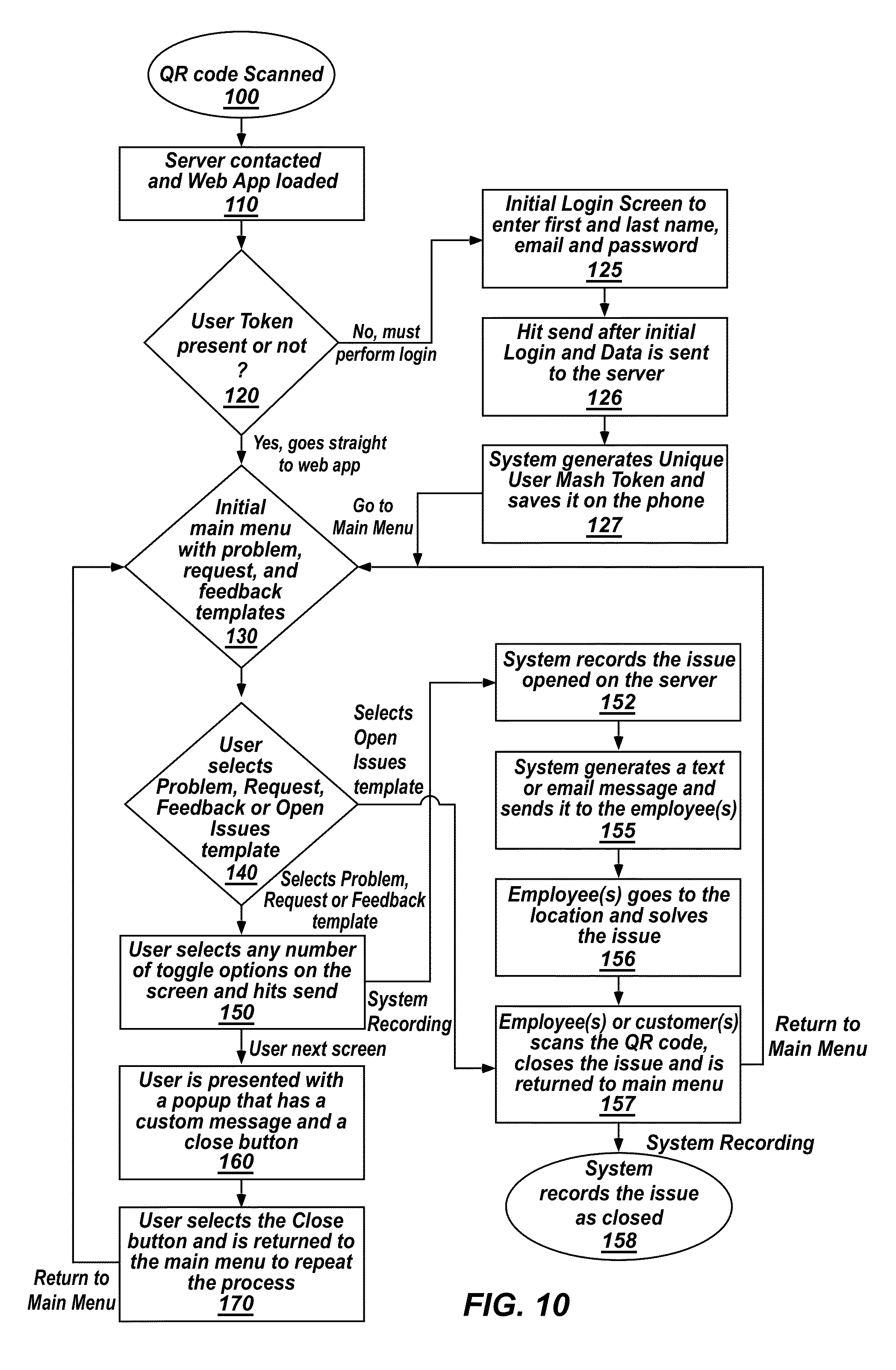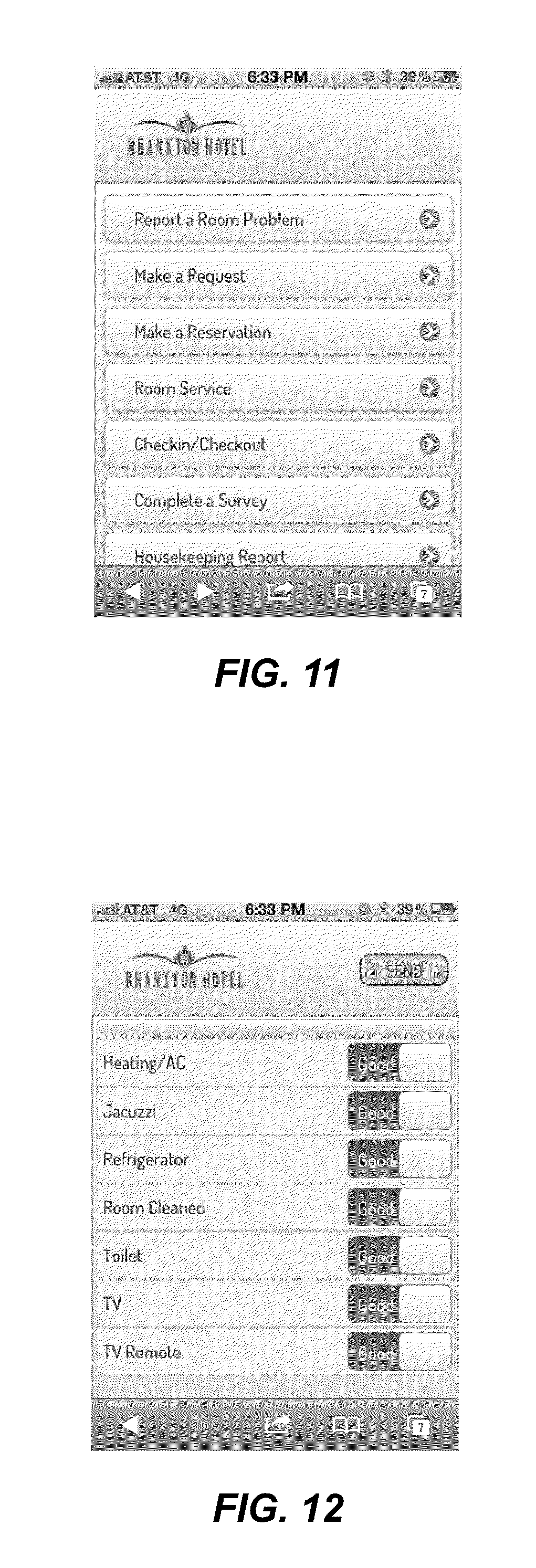Interactive computer software processes and apparatus for managing, tracking, reporting, providing feedback and tasking
a computer software and process technology, applied in the field of methods, apparatuses and systems for reporting issues, can solve problems such as insufficient follow-up and tracking, inability to address issues promptly, and time-consuming parts of facilities
- Summary
- Abstract
- Description
- Claims
- Application Information
AI Technical Summary
Benefits of technology
Problems solved by technology
Method used
Image
Examples
Embodiment Construction
Overview.
[0056]The following description provides various embodiments, methods, apparatus, and or systems of the present invention. As used herein, the terms “web,”“online” and “internet” are synonymous and mean an Internet or intranet network. The term “he” means “he,” or “she” and “his” means “his” or “her.” The term “mobile phone” means any type of mobile electronic device. The term “detectable code” means an electronically detectable code, such as a bar code or matrix code, including without limitation a quick response (QR) code that can be sensed by an electronic device, such as a mobile phone.
[0057]The present invention, also referred to herein as the “Quick Request” system or “present system,” is a customer interaction system that uses mobile smartphones scanning quick response (QR) bar or matrix codes to communicate problems to a company, make requests, provide feedback and allow the company's employees to report their work and have others inspect that work without paperwork...
PUM
 Login to View More
Login to View More Abstract
Description
Claims
Application Information
 Login to View More
Login to View More - R&D
- Intellectual Property
- Life Sciences
- Materials
- Tech Scout
- Unparalleled Data Quality
- Higher Quality Content
- 60% Fewer Hallucinations
Browse by: Latest US Patents, China's latest patents, Technical Efficacy Thesaurus, Application Domain, Technology Topic, Popular Technical Reports.
© 2025 PatSnap. All rights reserved.Legal|Privacy policy|Modern Slavery Act Transparency Statement|Sitemap|About US| Contact US: help@patsnap.com



